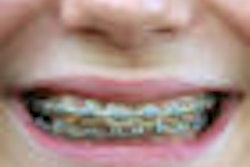
How much will it cost? What could be the potential complications? How long will I have to stay in the hospital?
When it comes to orthognathic surgeries, which are performed to correct discrepancies of skeletal origin and improve speech, aesthetics, and function, dentists and orthodontists frequently encounter such questions from patients. But there is a lack of information on a national level when it comes to the answers.
A study presented during a poster session at the recent American Association for Research (AADR) annual meeting in Tampa mined a national database and collected information to find answers to some of the most frequently asked questions.
“There are no nationally representative estimates of orthognathic surgeries.”
— Shankar Rengasamy Venugopalan, BDS
Although several studies have focused on these concerns, there is a general inconsistency among their results which indicates a need for a nationwide report tackling these concerns, noted the study authors from the Harvard School of Dental Medicine.
They analyzed the Nationwide Inpatient Sample (NIS) -- the largest all-payer inpatient care database in the U.S. that provides nationally representative estimates of all hospitalizations in the U.S. -- to estimate the number and type of orthognathic procedures performed in the U.S. from 2000 through 2008.
They examined outcomes, including hospitalization charges, complications, and length of stay.
Here are some of their findings:
- A total of 108,264 hospitalized patients underwent an orthognathic surgery during the study period.
- Their average age was 28 years.
- Females comprised 58.5% of all hospitalizations.
- Segmental osteoplasty of the maxilla was the procedure performed most often (43% of all hospitalizations) followed by open osteoplasty of the mandibular ramus (29%).
- Complications included hemorrhagic complications (1.1% of all hospitalizations), iatrogenic-induced complications (1.05%), bacterial infections (0.4%), respiratory complications (0.4%), cardiac complications (0.3%), post-operative pneumothorax (0.2%), decubitus ulcers (0.2%), septicemia (0.2%), and mycoses (0.2%).
- The mean charge per hospitalization ranged from $19,305 in 2000 to $47,348 in 2008.
- The mean length of stay was 2.6 days.
- Close to 65% of all procedures were performed in teaching hospitals.
- Private insurance plans covered 77.7% of all hospitalizations, while Medicare, Medicaid, and other insurance plans were the payers for 2.5%, 8.9%, and 3.8% of hospitalizations, respectively.
Knowledge gap
"There is a knowledge gap in outcomes on patients undergoing orthognathic surgery procedure from a nationally representative data set," study author Shankar Rengasamy Venugopalan, BDS, told DrBicuspid. "To date, there are no nationally representative estimates of orthognathic surgeries in the U.S."
Previous studies have examined patient satisfaction levels after orthognathic surgery. For example, a 2010 study found that the key to patient satisfaction following orthognathic surgery lies not just in the postsurgery results, but in presurgical conversations between the doctor and patient.
Another study, presented at the 2010 AADR meeting, examined 339 patients with dentofacial disharmony and found that patient expectations of surgical outcomes may be too high and that recovery takes longer than patients and clinicians often anticipate.
This, however, is the first study to examine orthognathic surgeries and provide national and regional estimates about issues like cost and complications using the NIS database, according to the study authors.
"Not everyone has access to this database, and not a lot of researchers are even aware that it exists," said Dr. Venugopalan.
Some of the most frequent questions encountered by the dentists and orthodontists suggesting a surgical treatment plan to their patients to correct skeletal problems are number of days of hospitalizations, hospital charges, and hospital complications, he noted.
"Our study results provide answers to these questions that would be valuable to a dentist, as they could now answer those questions based on scientific evidence rather than on personal experience," he said.
There is a significant knowledge gap that needs to be filled to improve access and quality of care for patients seeking orthognathic surgical procedures and this report could help, concluded the study authors.
They plan to submit the full findings of the study to the Journal of Oral and Maxillofacial Surgery.



















